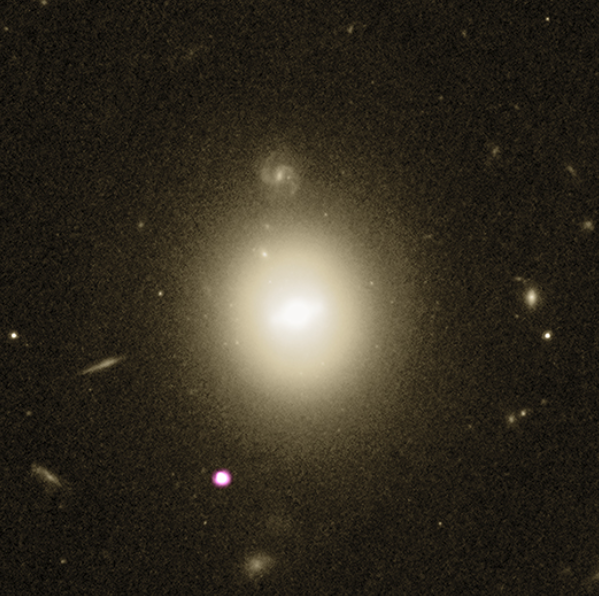

The top image shows the galaxy named 6dFGS gJ215022.2-055059 in data from NASA’s Hubble Space Telescope (yellow), with the X-ray source inferred to contain the IMBH detected by Chandra (purple) on the outskirts. In the bottom panel, X-ray data from XMM-Newton over two epochs shows how the candidate IMBH brightens over time.
Black holes are divided, based on their mass, into supermassive black holes (SMBHs) with masses more than 1 million suns that reside in the centre of the galaxies and stellar black holes with masses up to 20-30 times the mass of our Sun. The former are believed to be formed by intermediate-mass black holes (IMBHs). One possible mechanism that has been proposed for the formation of IMBHs is described in one of our previous articles. However, IMBHs are hard to detect and only a few candidates have been found so far.
Now, scientists used ESA’s XMM-Newton and NASA’s Chandra X-ray Observatories as well as the Swift X-ray Telescope (among other telescopes) and found evidence for the existence of an IMBH. While observing a galaxy that resides about 740 million light years away, they detected a source emitting X-rays. X-rays can be produced when a star passes by a black hole (BH) and gets disrupted and torn apart by the immense gravitational force of the BH. Their analysis revealed that in this case, the mass of the BH is around 50000 times that of our Sun!! However, these outbursts are not always triggered during such an event. This suggests, that there could be many more similar black holes in the Universe that we have not detected!!
Publication: Lin et al. 2018
Source: Chandra
